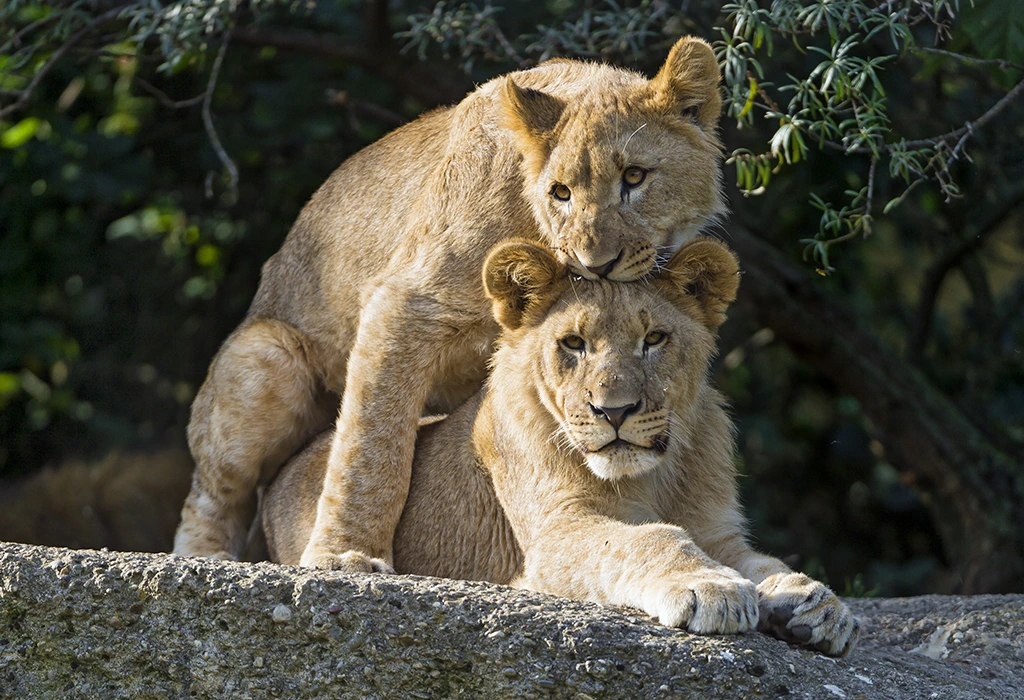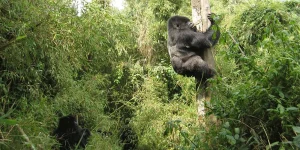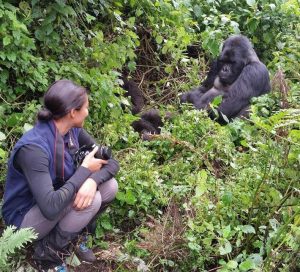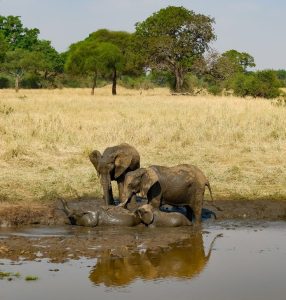How Can I See Tree Climbing Lions in Uganda and Tanzania?
Tree-climbing lions are one of the most unique and fascinating sights in the animal kingdom. Known for their unusual behavior of climbing trees—an activity not commonly seen among lions—these remarkable animals are found in two of East Africa’s top safari destinations: Uganda and Tanzania. If you’re keen on spotting these elusive creatures, here’s a guide on how to see tree-climbing lions in both countries. How Can I See Tree Climbing Lions in Uganda and Tanzania?
Where Can You See Tree-Climbing Lions in Uganda?
In Uganda, the most famous location to witness tree-climbing lions is Ishasha, a region of Queen Elizabeth National Park in the western part of the country. This area is renowned for its tree-climbing lion population and offers one of the best opportunities to observe this rare and captivating behavior.
Why Ishasha in Queen Elizabeth National Park?
Unique Behavior: The lions in Ishasha have adapted to the region’s dense forests and hot, humid climate by climbing fig trees to escape the heat and avoid insects on the ground. This unique behavior sets them apart from other lions found in Africa.
Accessible: The Ishasha sector is easily accessible via the park’s main entrance, making it a convenient stop on a safari through Queen Elizabeth National Park.
Abundant Wildlife: While the tree-climbing lions are the star attraction, Queen Elizabeth National Park is home to diverse wildlife, including elephants, buffaloes, hippos, and a wide variety of bird species. You’ll also find the park’s famous Kazinga Channel, a great place to take a boat safari and spot wildlife up close.
Best Time to See Tree-Climbing Lions in Uganda
The dry season (from June to September and December to February) is the best time to visit Ishasha. During this time, the lions are more likely to be active and visible, as the heat drives them to climb trees to stay cool.
How to Spot Tree-Climbing Lions in Ishasha
Guided Game Drives: To increase your chances of seeing tree-climbing lions, it’s advisable to take a guided game drive. The guides are familiar with the lions’ habits and can take you to areas where they are frequently seen lounging in the trees.
Patience: Lions are elusive, and tree-climbing lions are no exception. They may be hidden in the foliage, so it’s important to be patient and take your time while on a game drive.
Where Can You See Tree-Climbing Lions in Tanzania?
In Tanzania, the most famous place to witness tree-climbing lions is Lake Manyara National Park, located in the northern part of the country. This park is renowned for its lush environment, stunning landscapes, and unique wildlife, including its famous tree-climbing lions.
Why Lake Manyara National Park?
High Frequency of Tree-Climbing Lions
Lake Manyara stands out as one of the few places on Earth where lions regularly climb trees. These big cats take to the branches with surprising agility, taking advantage of the park’s mix of woodlands, grasslands, and the shimmering soda lake. The diverse landscape creates the perfect setting for this rare and fascinating behavior.
Scenic Beauty
Lake Manyara stuns visitors with its breathtaking scenery. The dramatic cliffs of the Great Rift Valley form a striking backdrop, while the lake shimmers below, drawing in flocks of colorful birds. Bird watchers flock here to witness the spectacle—cameras ready.
Access to Other Wildlife
Lake Manyara National Park teems with wildlife. Visitors often spot elephants strolling through the forest, zebras grazing on the plains, and giraffes stretching their necks for acacia leaves. Bird lovers also find paradise here, with flamingos, pelicans, and eagles making regular appearances.
Best Time to See Tree-Climbing Lions in Tanzania
Similar to Uganda, the dry season (from June to October) is the optimal time to visit Lake Manyara National Park. During this period, the lions are more likely to be visible in the trees, as they seek refuge from the heat and rest.
How to Spot Tree-Climbing Lions in Lake Manyara National Park
Guided Safaris: Maximize Your Chances
For the best shot at spotting tree-climbing lions, join a guided safari. Local guides know the terrain and understand lion behavior, giving you a far better chance of tracking them down during your game drive. Their insights often lead to more meaningful and successful wildlife encounters.
Game Drives & Walking Safaris
Most sightings of tree-climbing lions happen during game drives, where you cover more ground and access the areas they frequent. However, some parts of the parks also offer walking safaris—a chance to step into the wild on foot and gain a richer perspective on the ecosystem, guided by expert rangers who share their knowledge of tracks, plants, and animal behavior.
Why Do Lions Climb Trees?
Although wildlife experts still puzzle over this unusual behavior, several theories offer insight into why some lions take to the trees:
Escape from the Heat: In places like Lake Manyara and Ishasha, the forest canopy offers a cooler escape from the blazing sun. Lions often climb trees during the hottest part of the day to rest in comfort.
Avoiding Pests: The ground in some regions swarms with tsetse flies and other irritating insects. Tree branches provide lions with a peaceful refuge above the buzzing nuisance.
Rest and Safety: Elevated perches give lions a safe place to rest, away from ground-level dangers and competition. From the branches, they also gain a better view of their surroundings—ideal for spotting prey or threats.
Social Learning and Communication: Some researchers suggest that tree climbing may be a learned behavior, passed from older lions to younger ones. It might also serve as a way for pride members to communicate or bond.
Can You See Tree-Climbing Lions in Other Locations?
Outside of Lake Manyara in Tanzania and the Ishasha sector of Queen Elizabeth National Park in Uganda, sightings of tree-climbing lions are extremely rare. These two parks remain the top destinations for travelers hoping to catch a glimpse of this extraordinary behavior.
While Ishasha in Uganda and Lake Manyara in Tanzania are the most well-known places to see tree-climbing lions, there are other areas where you might be able to spot them. However, sightings are rare, and the lion populations in these other regions are not as famous for climbing trees. Some lesser-known areas where tree-climbing lions have been observed include:
Tarangire National Park in Tanzania (though sightings are less frequent)
Selous Game Reserve in Tanzania (where lions are known to sometimes climb trees)
How to See Tree-Climbing Lions in Uganda and Tanzania
Spotting tree-climbing lions is a rare and exhilarating highlight of any safari. For your best chance to witness this unique behavior, head to Queen Elizabeth National Park in Uganda or Lake Manyara National Park in Tanzania. Both parks offer expertly guided safaris that not only increase your chances of seeing these agile big cats but also deepen your understanding of their behavior and habitat.
To maximize your experience, plan your visit during the dry season, when lions are more likely to be active—and easier to spot lounging in the branches. Whether you’re exploring Uganda’s lush terrain or soaking in the scenic vistas of Tanzania, catching a glimpse of tree-climbing lions promises to be an unforgettable moment on your East African adventure.




